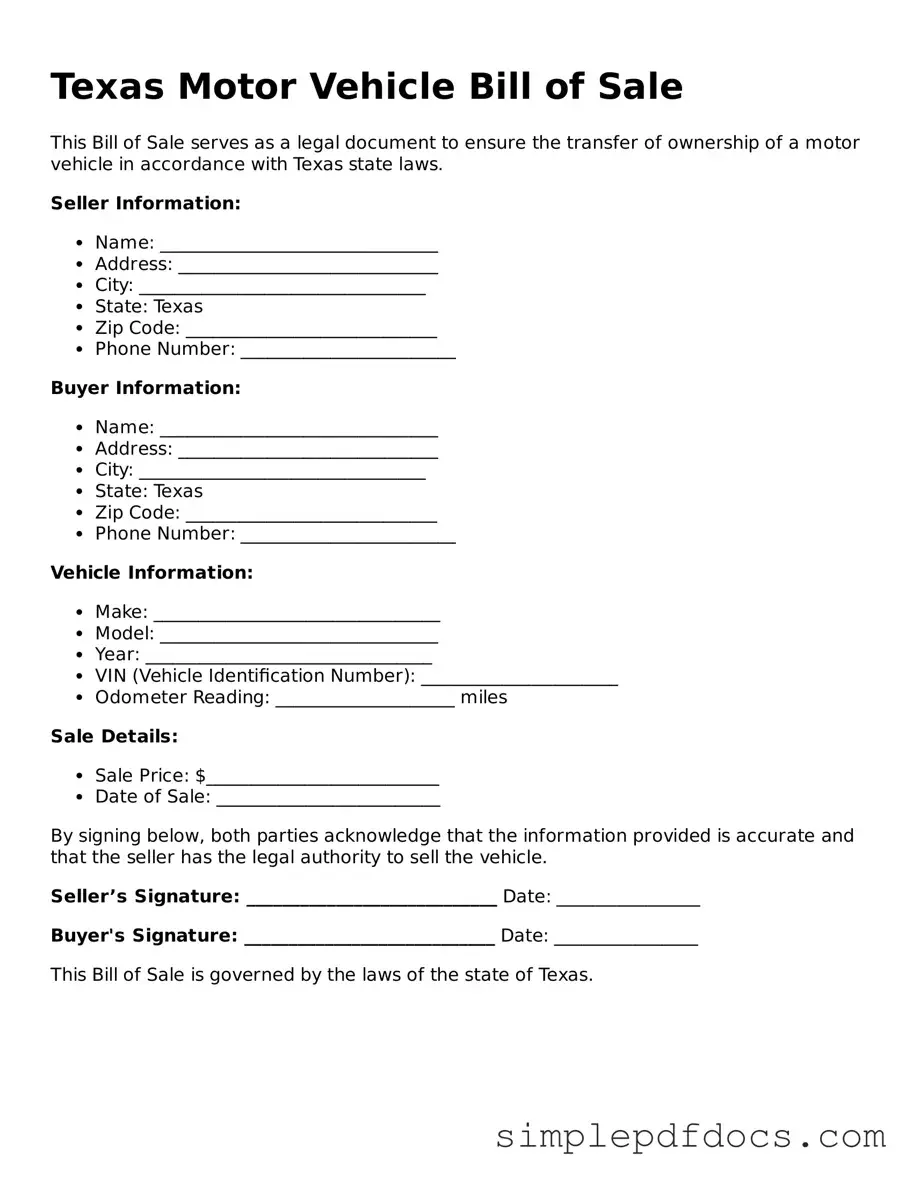Legal Motor Vehicle Bill of Sale Document for the State of Texas
The Texas Motor Vehicle Bill of Sale form is a legal document that facilitates the transfer of ownership of a vehicle from one party to another. This form serves as proof of the transaction and includes essential details about the vehicle and the parties involved. Understanding this form is crucial for both buyers and sellers to ensure a smooth and legally compliant transfer process.
Get Document Here
